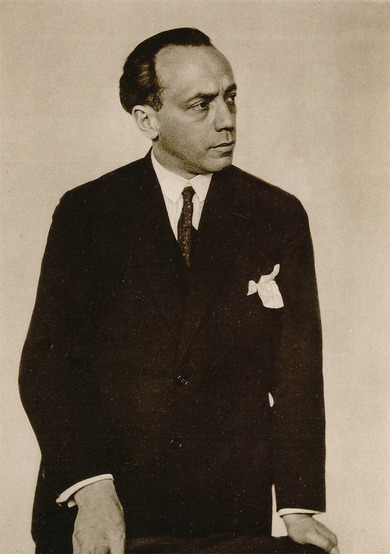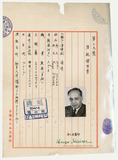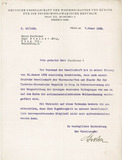Hugo Steiner-Prag
Es hat sich so vieles in meinem Leben geändert. Ich mache nichts Gleichgültiges mehr, und daher auch nichts Schlechtes. Alle meine seit Schweden entstandenen Arbeiten sind gut, ich darf es sagen, haben hohe Qualität. Schon in Prag fing es an besser zu werden und seitdem bin ich enorm heraufgekommen.
[So much in my life has changed. I'm not producing anything indifferently anymore and therefore none of it is bad. All my works which have come into being since Sweden are good, some, I may say, are of a very good quality. It already started getting better in Prague and since then I've come a long way. (ed. trans.)]
Hugo Steiner-Prag, in a letter to his daughter Helga Rosenkranz in Jerusalem, 30 May 1943
| Born | 12 December 1880 Prague, Austria-Hungary, today the Czech Republic |
|---|---|
| Died | on 10 September 1945 in New York, USA |
| Exile | Czechoslovakia, Sweden, United States of America |
| Profession | Graphic designer, Illustrator |
At the time the Nazis seized power, Hugo Steiner-Prag - since 1910 professor at the renowned Leipzig Academy for Graphic Art and the Book Trade - was one of Germany’s most famous illustrators and book designers. His reputation was founded particularly on the illustrations he did for an entire series in the fantasy genre which appeared in book form after the turn of the century. Because of his Jewish descent, in 1933 Steiner-Prag was dismissed from his professorship, after which he emigrated to Czechoslovakia and settled in Prague, the town of his birth. Here he succeeded in establishing a department for international book art at the municipal Museum for Arts and Crafts as well as founding
Shortly before German occupation, Steiner Prag (following an invitation by Swedish art delegates) moved to Stockholm where he designed, among other things, the covers for the complete works of Thomas Mann, published by the exile Bermann-Fischer publishing house. From there, in May 1941, he followed his long-time companion Eleanor Feisenberg via the Soviet Union and Japan to the United States. His new abode-in-exile in New York once again saw a phase of great productivity: Steiner-Prag designed books, took on teaching assignments and wrote critical articles about contemporary art in Nazi Germany. While working on illustrations for the collected volume of Famous Ghost Stories, shortly after the end of the war, he died of a heart attack.
Selected Works:
Ausgewählte Märchen by Hans Christian Andersen (book illustrations, 1905)
Die Elixiere des Teufels by Ernst Theodor Amadeus Hoffmann (book illustrations, 1907)
Weihnachtserzählungen by Charles Dickens (book illustrations, 1908)
Der Golem. Prager Phantasien nach G. Meyrincks Roman (book illustrations, 1916)
Phantastische Fahrten by Edgar Allan Poe (book illustrations, 1922)
Further reading:
Bockwitz, Hans H.: Erinnerung an Hugo-Steiner-Prag. Leipzig: Deutsches Buch- und Schriftmuseum 1949
Kapr, Albert (Hg.): Traditionen Leipziger Buchkunst. Leipzig: Fachbuchverlag 1989
Schlegel, Irene: Hugo Steiner-Prag. Seine Leben für das schöne Buch. Memmingen: Edition Curt Visel 1995



